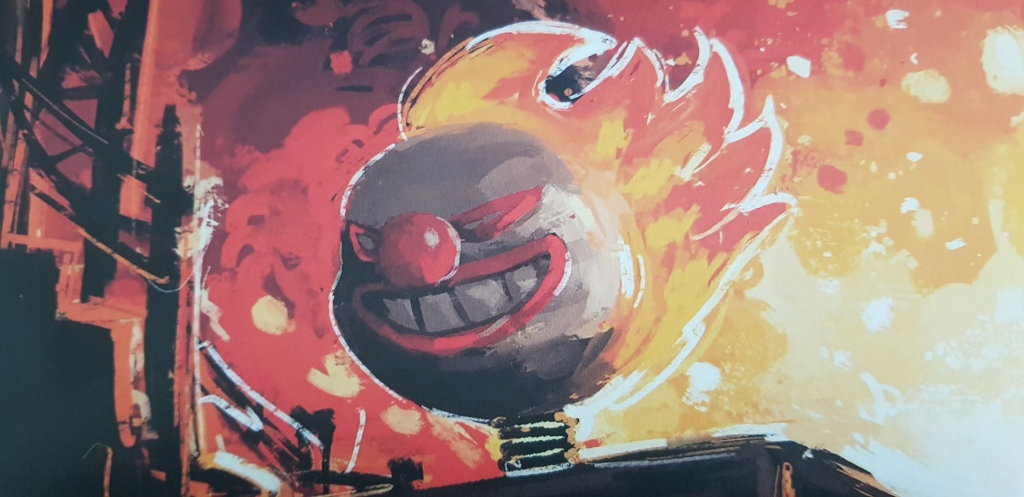Recently, we have been blessed with a slew of new gaming publications. Just last month I reviewed Sega Mania, a new Sega mag in the style of 90’s mags like Mean Machine. And hot on the heels of that we now have Lock-On, a gaming journal from Lost In Cult. They call it a journal because it is bigger than a magazine, has lengthier articles and is printed on high quality stock. This is reflected in the price, coming in at £20. That may seem steep at first but the value becomes clear as soon as you turn the pages. So lets get stuck in, is Lock-On a must have for retro fans?
Lock-On has been conjured from the mind of Andrew Dickinson, creator of Dreamcast Years and other retro projects over many years. He describes Lock-On as ‘a labour of love’ and it is clear from my initial flick through that time, effort and thought has gone into this bumper journal. The first volume is centred around the PlayStation with many well known journalists, writers and artists contributing to its beautifully illustrated pages. The project started out as a Kickstarter with volume 2 following suit 17th August 2021. There has been a huge buzz around Twitter and Instagram following the launch and the future looks rosy for the Lost In Cult team.

The excellent forward, from writer John Linneman, sets a high bar for the rest of this impressive journal to follow. A quick snapshot of PlayStation’s history accompanied by an amazing artwork from Sam McKenzie. It is obvious from just one page turn that Lock-On is aiming for high quality, well researched articles while adding a splash of dazzle from its eye-catching original artwork. The onslaught of PlayStation information continues with a brief retrospective of Kula World before heading into a personal story about dinosaur love and gaming. I will not go through each article or piece one by one but suffice to say the writing is exceptional. And add to this the great artwork and thoughtful prose it is clear Lock-On has achieved what it set out to do.
It is not just retrospectives and personal stories. Some of the articles are thought provoking pieces that analyse the industry as a whole. They ask questions, without giving answers, and allow the reader to look up from the book, pause and reflect. I am impressed with the editing and overall style the book takes, it is genuinely different from any other retro publication out there. A personal favourite was Nate Ellingsworth’s piece on Castlevania. He eloquently described the game as a master piece and ‘much like Mick Jagger swinging his microphone’. Fantastic. The confidence oozes from the writers, many are accomplished content creators and journalists, and it shows. Their experience has elevated what could have been a basic retrospective book to a personal, story driven read.

Without trying to sound too generic, I couldn’t put it down. Even a hardcore Sega nut like me was enthralled by the articles page after page. I almost forgot I was reading a journal about the PlayStation and was drawn in to the writers words. Now, I will not overcook it. Not every article was a new Dickens novel in stature but the overall quality cannot be understated. It goes beyond the games being discussed with touches of brilliance popping up throughout. I was trying to think of one word to aptly describe my experience and fell upon refreshing. Many publications of this type are always aiming for that nostalgia gland. Firing memories and pixel art at you. Not here, there are no pixel screenshots, no reviews or boxart, just stories and thoughts.
The original artwork that accompanies the prose is excellent. Each artist pinning their style to the pages, clearly given the license to go create. I found myself flicking through just admiring the pieces, even to games I did not like. One feature concerning the concept art for the PlayStation logo was most memorable. There is the odd article that appears bland in style, with simple motifs instead of a huge art piece. But this is understandable, you cannot have an original piece of art on every page. That would have been a little much and sometimes great words paint the pictures for you. The amount of different art styles needs a mention as well. Everything from pop art to actual paintings, each one complimenting the article beautifully.

While I am singing its praises, Lock-On is not for everyone. Those that prefer a glossy mag to flick through the news and reviews may find this a little bit much. It is aimed at those retro fans wanting to sit down on their favourite chair, with a glass of wine, and indulge. The £20 asking price should be enough to let you make up your mind if you want dive into 150 pages of thought provoking prose. That said, anyone can get something from the artwork as it makes a great addition to your gaming room bookshelf. All in all, I think most folk reading this review will already know if it is for them or not.
Lock-On feels like the kind of curio you would pick up on a museum visit. You know the type, a glossy book about the paintings and exhibits. Curated in a fashion that allows you to snuggle up with the art snobs. Strewn across your coffee table, it tells everyone who looks that you are cultured. I am a retro snob, I don’t deny it. I like to dazzle folks with ingrained, deep knowledge, of Japanese exclusives and throw out names of developers nobody has heard of (or cares about anymore). And that is what Lock-On is about. Allowing us to not just flick the nostalgia gland but also celebrate our love of retro gaming culture. In a world where it is all about the now, now, now Lock-On allows us to sit, contemplate and reflect on our love of gaming with style.

